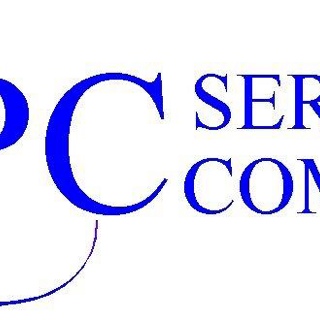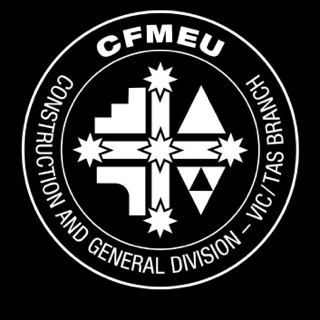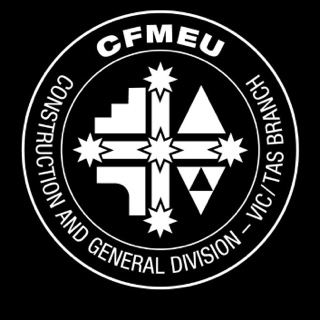Information
-
Company Name
-
Conducted on
-
Prepared by
-
Location
-
Company Contact
-
Company Contact Phone
-
Company Contact Email
-
Owner/ GC/ Sub-tier/ Other
Principal Commitment
-
1.1 A written safety policy statement signed by a company principal<br> <br>
-
1.2 Each company must comply with one (1) or more of the following:
-
1.3 Employ a designated Safety Coordinator/ Manager/ Director:
-
1.3.1 Safety responsibilities clearly defined in writing
-
1.3.2 Safety Coordinator must report to executive management of the company
-
1.3.3 Safety Coordinator attends all management/ project/ safety meetings
-
1.4 Be active in an AGC Safety Committee
-
1.5 Participation in the Safety Team audit by a Company Principal
-
1.6 Principal has been a presenter at an industry safety function
A Written Accident Prevention Program (per WAC-296-155-110) That Addresses:
-
2A. A Written New Hire Orientation that Contains the Following Items
(each item must be itemized in a written format): -
2.1 How, where, and when to report injuries
-
2.2 Location of first aid kits/facilities
-
2.3 How to report unsafe conditions and practices
-
2.4 Use and care of personal protective equipment
-
2.5 Actions to take in the event of emergencies
-
2.6 Identification of chemical hazards and proper use
-
2.7 An outline of the company’s overall safety program
-
2.8 A definition of your company’s safety roles and responsibilities
-
2.9 Chemical Hazard Communication Training (WAC 296-800-170)
-
2.10 Fire Prevention Training (WAC 296-155 Part D)
-
2.11 Fall Protection Training (WAC 296-155 Part C-1)
-
2.12 Site Specific Training (i.e. confined space)
-
2.13 In-house or AGC safety classes/ training
-
2B. A Written Policy on the Following Safety Items:
-
2.14 Asbestos and Lead Policy
-
2.15 Assured Grounding Program or Ground-Fault Circuit Interrupter (WAC 296-155-447)
-
2.16 Bloodborne Pathogen Exposure Policy (WAC 296-823)
-
2.17 Chemical Hazard Communication Policy (WAC 296-800-170)
-
2.18 Confined Space Policy (WAC 296-809)
-
2.19 Crane Usage Policy
-
2.20 Disciplinary procedures & enforcement of health & safety rules for Subcontractors & Employees
-
2.21 Emergency procedure plan
-
2.22 Employee Safety Concerns Procedure
-
2.23 Fall Protection Policy (WAC 296-155 Part C-1)
-
2.24 Fire Prevention Policy (WAC 296-155 Part D)
-
2.25 Hearing Loss Prevention Program (WAC 296-817)
-
2.26 Heat Stress Program (WAC 296-62-095)
-
2.27 Lock-out/Tag-out Policy (WAC 296-803)
-
2.28 Motorized Vehicle/Fleet Safety Policy (WAC 296-155 Part M)
-
2.29 Respiratory Protection Policy (WAC 296-842)
-
2.30 Trenching & Shoring Policy (WAC 296-155 Part N)
-
2.31Workplace Violence Policy
First Aid/CPR & Record Keeping
-
3. All Supervisors’ First Aid/CPR cards checked at start of all new projects
-
3.1 Certification information for employees are tracked and on file
-
3.2 OSHA 300
Accident Investigations and Reports
-
4. Reporting procedures are clarified at the time of hire (see Orientation Checklist)
-
4.1 Investigation procedures for “near misses”
-
4.2 Investigations are conducted in 24 hours
-
4.3 Investigations are documented on a company report form
-
4.4 Investigations of accidents & “near misses” are discussed during weekly safety meeting<br><br>
Substance Abuse
-
5. A written Drug & Alcohol Policy, reflecting current company policies
-
5.1 Drug Testing (optional) For example: Pre-employment, post-accident, for-cause, random, DOT
Participation
-
6. Participation in at Least One Construction Safety Activity by One or More Employees: (For example: AGC Safety Symposiums, AGC Safety Committee meetings, ASSE meetings or seminars, Puget Sound Safety Summit meetings, Seattle Vicinity Construction Safety Council meetings, or Evergreen Safety Council)
Return-to-Work Program (Optional)
-
7. AGC RETRO PARTICIPANT
-
7.1 Written Return-to-Work Program
-
7.2 Written Light Duty job descriptions
-
7.3 Documentation of supervisory training in Return-to-Work criteria
-
7.4 Top management commitment to a Return-to-Work program
Safety Management Items/ Jobsite
-
8.0 Accident prevention program on site
-
8.1 Job Hazard Analysis
-
8.2 Confined Space Permit
-
8.3 Fall Protection Work Plan
-
8.4 Complete inspection forms: Assured Grounding/GFCI Program
-
8.5 Weekly Jobsite Inspection Forms
-
8.6 Weekly Toolbox Meeting Minutes
-
8.7 Site Specific Safety Plan
-
8.8 Cranes documentation:
-
8.8.a Crane Operator Certification and hours
-
8.8.b Crane Certification with proof of load testing
-
8.8.c Certifier Certification
-
8.8.d Rigger Qualification (by Type)
-
8.8.e Signal Person Qualification
-
8.9 WAC Standards for construction located on worksite
-
8.10 Safety Bulletin Board with required posting
-
8.11 Emergency phone numbers posted
-
8.12 OSHA 300A (Posted February through April)
-
8.13 First Aid/CPR training certification cards (Superintendents, Foremen)
Employee Facilities/ Jobsite
-
9.0 Toilet
-
9.1 Wash area with temperate water/ Sanitizer
-
9.2 Dry shack - lunch room
-
9.3 Above listed facilities clean and sanitary
Jobsite Protective Equipment/ Jobsite
-
10.0 First aid kit suitable for crew size (office, dry shack, tool van)
-
10.1 Fire protection (extinguisher date and type correct for situation)
Housekeeping/ Jobsite
-
11.0 Work Areas clean and orderly
-
11.1 Deck free of: protruding nails, holes, loose boards
-
11.2 Aisles and walkways clear of obstructions
-
11.3 Guardrails in place where required
-
11.4 Trash chute for over 20’ heights
Required Personal Protectice Equipment/ Jobsite
-
12.0 Head Protection - hard hats
-
12.1 Hearing protection - ear plugs<br>Sound Level Meter: _____dB reading <br>
-
12.2 Leg protection - chain saw chaps
-
12.3 Foot protection - work boots
-
12.4 Eye and face protection - safety glasses
-
12.5 Respiratory protection - mask dependent on exposure
-
12.6 Fall protection - safety harness, lanyards
-
12.7 Reflective Clothing- vest, 360 degrees
General Jobsite Safety Items/ Jobsite
-
13.0 Office trailer step railings
-
13.1 Only approved ladders in use (and secured)
-
13.2 Machine guards in place (saws, grinding wheels, etc.)
-
13.3 All power equipment is properly grounded
-
13.4 Extension cords and power equipment checked for shorts
-
13.5 Compressed gas cylinders in secured storage area
-
13.6 Fuel gas stored at a minimum of 20 feet from compressed gas cylinders
-
13.7 Flash back protectors for oxygen-acetylene torches in place/use
-
13.8 Proper access/egress for trenches more than 4 feet deep
-
13.9 Gas and diesel fuel stored in approved and properly marked safety cans
-
13.10 Proper barricades around pinch point exposure area (revolving cranes)
-
13.11 Proper Scaffold erection and usage
-
13.12 Back-up alarms on appropriate motorized equipment
-
13.13 Provisions for public safety










